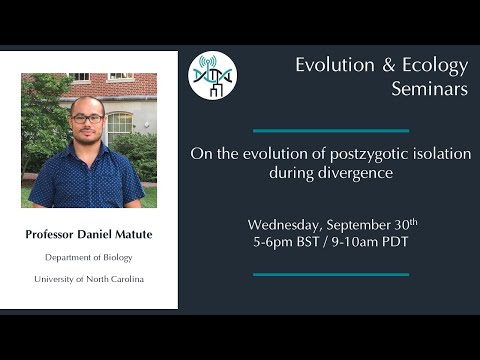Description:
Explore the evolution of postzygotic isolation during species divergence in this comprehensive lecture. Delve into the process of speciation, examining how behavioral isolation accumulates faster than other types of reproductive isolation. Investigate introgression patterns and the varying rates at which different traits accumulate. Analyze hybrid embryonic phenotypes and learn about the duplication mapping approach for detecting genes involved in hybrid inviability. Study Drosophila hybrids, focusing on giant early development and abdominal defects in mutants. Examine the ablation phenotype in mel/tei hybrids and explore giant chimeras in hybrid backgrounds. Discover autosomal modifiers of hybrid inviability through genome-wide association studies. Investigate the involvement of specific genes in hybrid inviability and uncover how this phenomenon reveals cryptic evolution at the molecular level. Gain valuable insights into the complex mechanisms underlying postzygotic isolation and its role in the divergence of species.
Read more

Daniel Matute - On the Evolution of Postzygotic Isolation During Divergence
Add to list